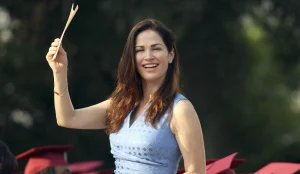Talking to Suanne Honey, she explains the different avenues abused partners can take, and why despite being in the midst of high emotions, children must be considered first and foremost.
What protections does the abused spouse get when undergoing a divorce in this case?
he biggest advantage of a protective order (also called a Domestic Violence Restraining Order After Hearing) is that the order is entered into the CLETS program.
The abused spouse gets a piece of paper when the judicial officer grants a domestic violence restraining order. All too often, the abused spouse thinks that piece of paper is a shield that will protect them from physical harm: it is only a piece of paper. The biggest advantage of a protective order (also called a Domestic Violence Restraining Order After Hearing) is that the order is entered into the CLETS program. The CLETS is a computer program used by all police agencies in California and if the abuser violates the terms of the restraining order, a call to the police will take higher priority over other calls. The protected or abused spouse needs to only say to the dispatcher or 911 that she or he has a restraining order and that the restrained party is violating the terms of the order. This will generate an immediate response as the police are trained that these are potentially very dangerous situations.
Problems can arise when the abused spouse somehow assumes that the abuser will comply with the order just because it was issued and served on the abuser. If abusers were rule followers, they would not have done the things that caused the judicial officer to issue the restraining order in the first place. The abused spouse needs to be aware of his/her surroundings, not put themselves in vulnerable situations to the extent that they can foresee harm and not – under any circumstances – reach out to talk to the restrained party unless the box is marked that they can have peaceful contact regarding the children. Even with this exception, the communication cannot be about property matters or other things as long as the restraining order is in place.
Having children come into Court to testify against a parent can be devastating to a child and should be the last resort, but, sometimes, it is necessary.
What accounts towards evidence for domestic abuse?
Photographs of injuries inflicted by the abuser are the best evidence. Text messages and email communications by the abuser may be relevant if they are harassing or contain admissions of harm. Often abusers apologize which counts as an admission. Credible witness testimony can sometimes be sufficient evidence.; portions of police reports can also be evidence. Sometimes the evidence can just come from the abused person and the abuser. Obviously the more evidence available, the more likely the Court will find a basis to issue the restraining order.
How easy is it to obtain such evidence?
Every case is different. Sometimes there is an abundance of evidence. People talk too much on social media; bruises, cuts and broken bones can be proven by photographs and medical records. Sometimes there is nothing but the testimony of the two parties involved. Although, unfortunately sometimes children witness the abuse.; abuse by one parent to the other parent in the presence of the children is considered abuse on the child. The difficulty is how to get that evidence before the Court. Having children come into Court to testify against a parent can be devastating to a child and should be the last resort, but, sometimes, it is necessary.
What are the different types of restraining orders?
In California, in the family court, there are different types of restraining orders.
- There is domestic violence restraining orders when one person (a spouse, relative or some special relationship) commits violence, harasses, abuses or even disturbs the peace of the other spouse. These orders are typically three to five years but could be one year after the hearing. The abused party comes to court to request a temporary restraining order. The Court may or may not grant some or all of the requests, but will set the matter for hearing in about three weeks. After the hearing, the judicial officer will grant the restraining order for a specific period of time with very specific terms and may make a parenting order, child and spousal support orders and attorney fees.
- What attorneys often call “ATROs” or “Automatic Restraining Orders” attach to the Petitioner (the person filing for the divorce) at the time of the filing and attach to the Respondent (the other spouse responding to the Petition) at the time the Petition is properly served on the Respondent. The ATROs are on the 2nd page or backside of the Summons. This kind of restraining order is not about domestic violence. It is about money and property. It states the following: “(1) Neither party shall sell, transfer, encumber, conceal, assign, remove or in any way dispose of any property, real or personal, belonging to or acquired by either party, except: (a) as required for reasonable expenses of living; (b) in the ordinary and usual course of business; (c) in the ordinary and usual course of investing; (d) for payment of reasonable attorney’s fees and costs in connection with the action; (e) written agreement of both parties; or (f) by Order of the Court.
When people are highly emotional, they rarely make good judgment calls and work against their own self interests, as well as the best interests of the children.
How long does a divorce process take if domestic violence is a factor?
Domestic violence usually does not prolong a divorce case much longer than if domestic violence was not involved. Sometimes it can slow down the process, especially if the parties and children are undergoing counselling or reunification services. Things that tend to prolong the dissolution process involve business and other property valuations, getting disclosures and discovery. The thing that usually is one of the biggest delays is the emotional process of dissolving the marriage. It is the death of a relationship and has the same processes as the death of a family member. Parents not only have to deal with their own emotional issues but also those of the children. It is painful to see your spouse in another relationship even if you are the one that wanted the divorce in the first place.
About Suanne:
- What is the biggest challenge you face when defending clients in highly emotive cases?
Clients who are severely emotionally distressed (and everyone is distressed to some degree), often use children as footballs to gain advantage over the other spouse or to hurt the other spouse. What is amazing is that these parents love their children but love to fight with each other more than they love their children. When people are highly emotional, they rarely make good judgment calls and work against their own self interests, as well as the best interests of the children. The biggest challenge is to get them to understand the harm they are doing not only to themselves but to their children. Mental-health professionals are invaluable in this process. Too many people feel shame at having to get professional help which makes no sense. There is no shame to go to an oncologist when you have cancer. This is a form of cancer of the emotions. This does not necessarily mean they have a mental illness or are crazy. It is just a way to get resources and help on how to deal with the process and a difficult other parent and their own emotions.
- Do you have a motto or mantra you live by?
What goes around comes around. I also believe that once you love someone, that love never totally goes away. It doesn’t mean you can continue to be married to that person or even tolerate them any longer. If people could just get in touch with that part of their feelings and memories, greater peace would surround the family.
[ymal]
- What has been the biggest lesson you have learnt so far in your legal career?
When I first started practicing family law, I mistakenly believed that some parents were so harmful to the children that they just shouldn’t be around them any longer. People have a strong urge to know their biological parents. When a parent is missing from the child’s life, abandonment issues develop. Children turn to unhealthy promiscuous premarital relationships and street or prescription drugs to close this gap. They have difficult romantic relationships and other social skill problems. Every child should have some type of relationship with the biological parents. Sometimes that relationship needs to be in a safe and healthy environment.
The other thing is that parents need to accept that each parent brings something to the child. If the parent is difficult, the child will learn to navigate difficult teachers or difficult bosses and difficulties in life. If one parent coddles the child and the other parent tells the child to get back on the bike bleeding or not and just keep going, parents need to appreciate that both of these are important lessons of love for a child, one is not better than the other. Both are important. We have over-protected our children doing them a disservice making them less able to take life’s hardships as an adult. Let the children stumble and fall and be hurt while they have parents to guide and love them through the process.
- Do you have any nuggets of advice you would offer to those studying to become a lawyer?
If you are considering going into family law or estate planning, look into Collaborative Law. It is a peaceful way to resolve all issues. It is a cost-effective way for the entire family to resolve their own issues with the guidance of a professional team. The burnout rate for lawyers is less as they see they are helping the families rather than hurling allegations through the courtroom that can never be “unheard”.
Law school teaches students to zealously advocate for their clients. This is true for most areas of law but not family law matters. This area of law is a highly emotionally charged process that can and does adversely affect the entire family including the children. If you practice in family law, use peacemaking methods when possible, while protecting your clients’ rights and the best interests of the children and at all times be professional.
Do not take on the emotionality of your clients. This is sometimes hard to do. You serve your clients better by being detached from your clients while still allowing them to be heard.
Suanne I. Honey
Attorney at Law, 1605 E. 4th Street, Suite 250, Santa Ana, CA 92701-8301
Telephone: 714/259-1555
Fax: 714/259-1554
E-mail: honey@honeylaw.com
I have been practicing law continuously for 29 years. Current primary area of practice is in the area of family law: dissolution of marriage (divorce), paternity actions, child custody, child support, spousal support (alimony), domestic violence, division of assets and debts, pre-marital agreements (prenups), modification of child support and spousal support among other issues, collaborative law and mediation services.




















